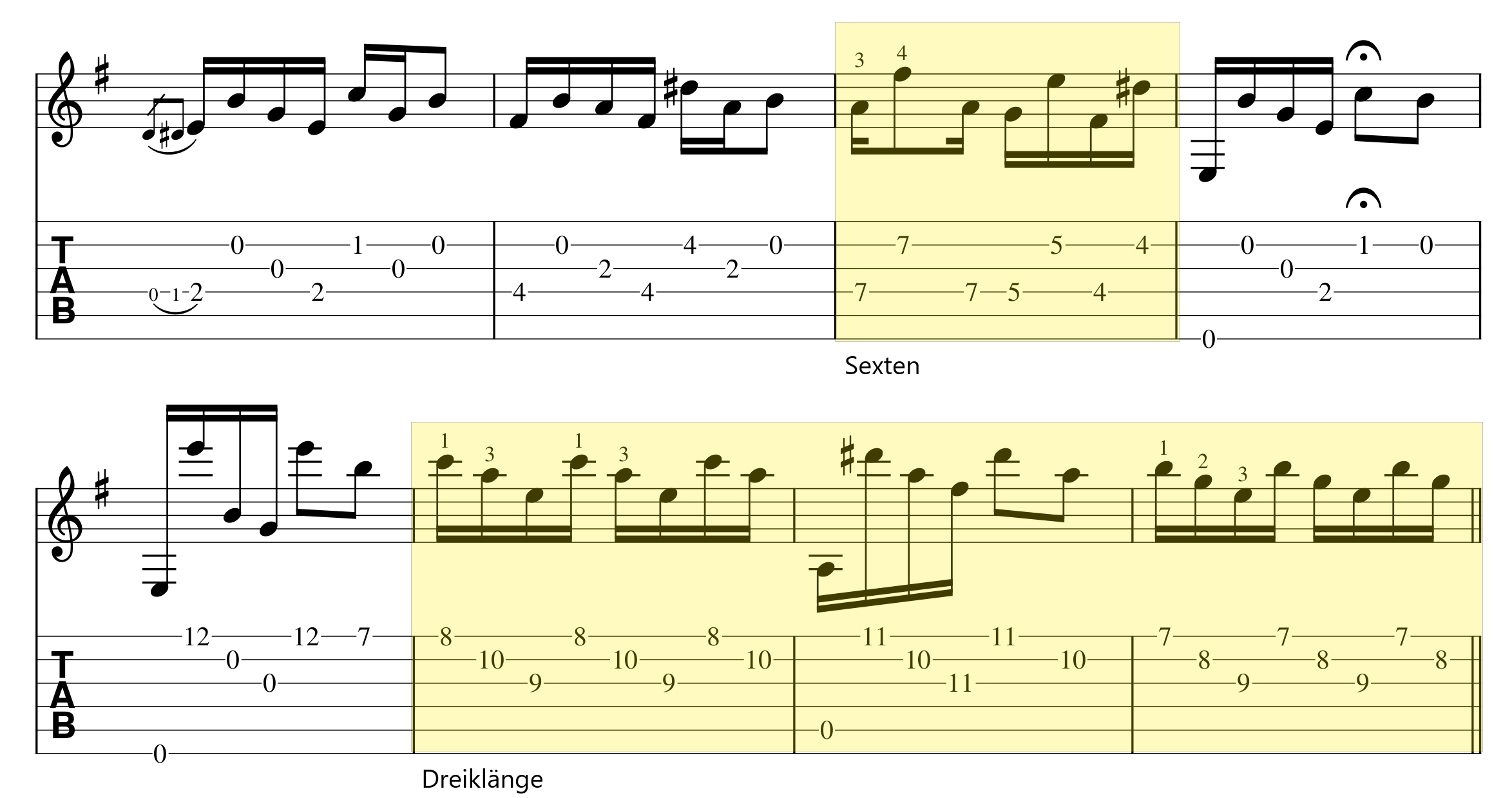The term Milonga is well known as a dancing style. In the musical sense, the ambiguous term milonga describes a part of tango music. Characteristic of the milonga is its rhythmic subdivision.
Like many Latin American styles, the milonga is based on 2/4 time, which is defined by a fixed basic rhythm. This 3-3-2 division is also characteristic of Argentine tango and Cuban habanera and is an important element of the music.

Milonga The Analysis
The beautiful milonga by Juan Buscaglia is a popular introduction to the sound world of South America and a good etude to improve your picking technique. The rhythmic division is clearly discernible from the very first bars and throughout the piece. This plucked pattern is played throughout with the division PMI – PMI – PI.

The piece is in the key of E minor and consists exclusively of the basic harmonies E minor, A minor and B7. A special feature is the melodic lead of the bass line in the rhythmic scheme of the milonga. You can see that the lowest notes of the picking pattern are consistently played on the first, third and seventh note of the bar. This corresponds to the basic 3-3-2 rhythm of the Milonga as described above.
The second part of the song is technically more demanding: the melody goes beyond the first position. The incorporation of the (very guitar-typical) interval of a sixth and triads in the high register creates a change of mood before the final part returns to the first position.

The ending of the piece is an E minor Arpeggio over three octaves, ending with a harmonic at the twelfth fret.
